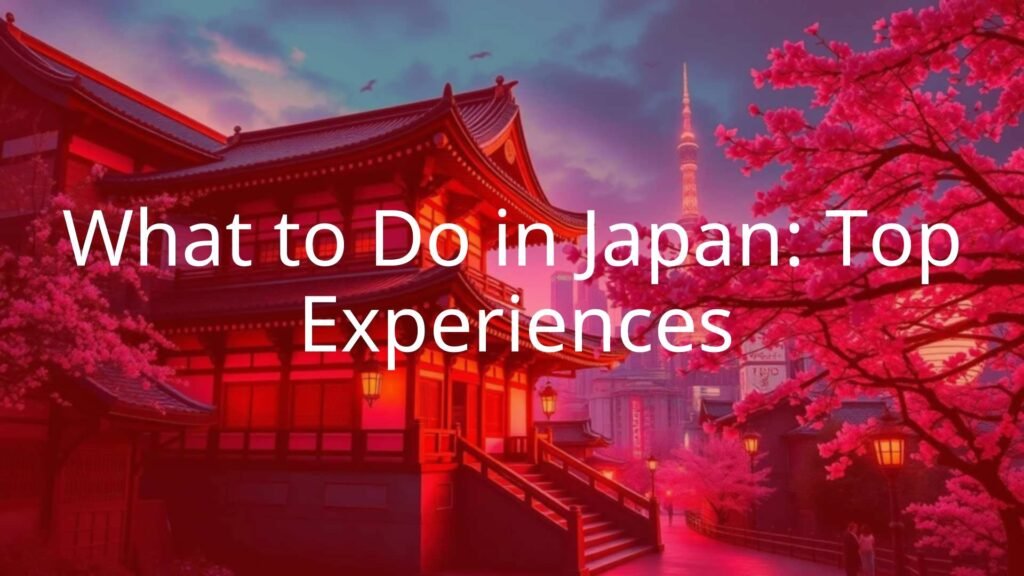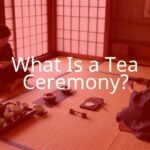Thinking about what to do in Japan? Japan offers an incredible range of things to see and do, from ancient temples set among green hills to the fast pace of bright modern cities. You can attend a traditional tea ceremony, watch the excitement of sumo wrestling, or simply enjoy local food on busy city streets. No matter what you’re interested in, there’s always something here for everyone. This guide lists the top experiences so you can plan your trip and enjoy the best of what Japan has to offer.
Whether this is your first visit or you’ve been many times before, Japan’s mix of tradition, natural beauty, and modern city life means every trip is different. You’ll always find something new and exciting in this country that leaves a lasting memory.
Why Japan Is Special for Travelers
Japan is unique because it perfectly blends old traditions with new technology. You can visit quiet shrines in the morning and high-tech shopping centers in the afternoon. The towns, cities, parks, and even public toilets are clean and well cared for. People are friendly, and sometimes you’ll find that locals want to practice English with you simply out of curiosity. These details make traveling in Japan easy and enjoyable.
The local culture values politeness, cleanliness, and respect for others. These qualities are clear in daily life and make each experience, big or small, feel special and very Japanese.
How Japanese Culture Affects Travel
Japanese culture makes every travel moment richer. There’s great care in how food is served, how gardens are arranged, and how people interact. This focus on politeness and attention to detail is noticeable everywhere you go.
Japan combines Western and Eastern ideas but holds tightly to old customs. You’ll see this mix everywhere-from fashion choices to building styles. The result is a place where many modern things still have a touch of tradition, so as you explore, you’re always finding something new.
When to Visit Japan
Each season in Japan has something special:
- Spring (late March-early April): Famous for the cherry blossom (sakura) season, with pretty pink and white flowers blanketing parks and streets. Many people enjoy outdoor parties under the trees.
- Autumn (October-early December): The leaves turn bright red and gold, especially in gardens with Japanese maple trees. The cool weather is good for walking and sightseeing.
- Winter (January-February): Hokkaido in the north is great for winter sports, and you can see snow monkeys enjoying hot springs in Nagano. Sapporo’s Snow Festival also takes place in this season.
- Summer: Hot and humid but lively with street festivals. This is also a good time for hiking in the mountains or relaxing by the sea.
Popular Types of Travel Experiences in Japan
Travelers visit Japan for all kinds of reasons. Some want to see old temples, join a tea ceremony, or spot geisha in Kyoto. Staying in a ryokan (traditional inn) is often on their wish list. Others come for nature-like looking at Mt. Fuji, soaking in hot springs (onsen), or cycling across pretty islands. City-life fans like Tokyo’s busy areas, Osaka’s nightlife, or checking out anime and manga shops in Akihabara. Almost everyone wants to try the local food, from sushi and ramen to food at busy markets.

Main Landmarks and Historic Sites
Japan is filled with historic places and famous sights. Visiting these helps you understand the country’s history and culture.
Seeing Mt. Fuji from Different Spots
Mt. Fuji, at 3,776 meters, is Japan’s tallest mountain and a symbol of beauty in Japan. You can climb it during summer, but many prefer to admire it from below. The Chureito Pagoda is a famous viewpoint, especially during cherry blossom or fall color seasons. The Fuji Five Lakes area and Kawaguchiko are also great places for views, especially at sunrise. Shiraito Falls and Fujisan Hongu Sengen Taisha Shrine are other good spots.
Walking Through Fushimi Inari’s Torii Gates
Kyoto’s Fushimi Inari Shrine is known for thousands of bright red gates that form tunnels up Mt. Inari. It’s dedicated to Inari, the rice god, and decorated with fox statues. Although the start of the path is busy, walking further up gets quieter and more peaceful. The full route is about 4 km and goes through about 10,000 gates.
Visiting Temples and Shrines
There are thousands of temples and shrines across Japan, with Kyoto alone having over 2,000. In Tokyo, Senso-ji Temple is the city’s oldest and has a lively street market leading up to it. Kinkaku-ji (Golden Pavilion) in Kyoto, covered in gold leaf and set by a pond, is another highlight. Kiyomizu-Dera offers city views and tasty spring water that’s said to bring good luck. Nara’s Todai-ji Temple is home to a giant Buddha and friendly deer.

Exploring Japan’s Famous Castles
| Castle | Location | Features |
|---|---|---|
| Himeji Castle | Himeji | Called the “White Heron Castle,” famous for its white walls and cherry blossoms. |
| Osaka Castle | Osaka | Set among city skyscrapers, surrounded by pretty gardens, especially pretty during flower season. |
| Matsumoto Castle | Matsumoto | Known as the “Black Crow Castle” for its color, with mountain views in the background. |
Visiting these castles lets you see Japan’s history up close and learn about samurai times.
Reflecting at Hiroshima Peace Memorial Park
This park is a moving reminder of the atomic bombing in 1945 and stands for world peace. The Genbaku Dome, left standing after the bomb, is a key symbol. The Peace Memorial Museum explains what happened in detail. The Children’s Peace Monument, covered with paper cranes, is especially touching.
Walking Historic Streets of Shirakawa-go and Takayama
Shirakawa-go is famous for its old thatched-roof houses, some more than 250 years old. Takayama keeps its old-town feel, with wooden homes, shops, and sake breweries. Both places are pretty and calm, far from the busy cities.
Enjoying Top Cultural Activities in Japan
Japan offers many ways to enjoy its rich culture. These activities give you a close look at old traditions and Japanese arts.
Joining a Tea Ceremony
The tea ceremony is a careful, peaceful way of making tea. It is about more than just drinking-it involves showing respect and focusing on each movement. Often paired with a small sweet, the process is slow and respectful. Kyoto has many places offering tea ceremonies.
Wearing Kimono or Yukata
Wearing a kimono or summer yukata gives you a true taste of Japanese style. Rental shops in Kyoto and Tokyo help dress you fully, often with hair styling, so you can stroll historical streets feeling like you’ve stepped into the past.
Meeting Geisha and Visiting Gion District
Geisha are trained in traditional dances, music, and hosting. Kyoto’s Gion district is the best place to spot geisha or their apprentices (maiko). Public performances happen during some festivals, while private experiences or tours offer a closer look at their art and lifestyle.
Watching Sumo
Sumo wrestling is Japan’s oldest sport. Six big tournaments happen yearly across the country, each lasting 15 days. The Ryogoku Kokugikan in Tokyo holds tournaments in January, May, and September. Watching sumo is exciting, and wrestlers follow many old customs before each match.
Seeing Kabuki or Noh Theater
Kabuki is loud and colorful, with actors in makeup and grand costumes. The stories are about old events or family drama. Noh is slower and uses masks and short, poetic plays. The Kabukiza Theatre in Tokyo is the main place to see kabuki, with tools for following along in English.
Staying in a Ryokan or Temple
Ryokans are traditional inns with tatami floors and futon beds, often with an onsen bath and fancy dinner (kaiseki). Staying at a temple (especially in Koyasan) lets you join in with morning prayers and eat simple, healthy meals cooked by monks.

Enjoying Nature and Outdoor Fun
Japan has amazing natural places, from mountains to beaches to wild monkeys in hot springs. There’s something for every nature lover or outdoor fan.
Seeing Cherry Blossoms and Fall Colors
Spring brings cherry blossoms, celebrated with hanami picnics under the trees. Top spots include Mt. Yoshino, Fuji Five Lakes, and many Kyoto temples. In autumn, colorful leaves take over, especially in temple gardens and mountain parks. Some places light up trees at night for a special effect.
Relaxing in Onsen Hot Springs
Onsen baths are a big part of Japanese life. People bathe naked (though some private or special baths allow covering), and each onsen has different minerals supposed to help your health. Onsen towns let you wander from bath to bath and enjoy the peaceful scenery.
Hiking in the Japanese Alps and Mt. Fuji
The Japanese Alps stretch through central Honshu, offering hikes for all levels. The Tateyama-Kurobe Alpine Route is famous for its mountain views. Mt. Fuji, open for climbing from July to September, is a popular hike-even more so for watching the sunrise from the top. Those who don’t want to climb can walk nature trails at Fuji’s base.
Watching Snow Monkeys in Nagano
Jigokudani Monkey Park in Nagano lets you see wild monkeys enjoying the hot springs, especially during winter. The monkeys are used to people and fun to photograph, and you can visit any time of year.
Cycling the Shimanami Kaido
This 70km bike route links the islands between Honshu and Shikoku, with easy rentals along the way. Riders enjoy sea views, quiet islands, good food, and friendly locals. The route has special bike lanes on bridges and is suitable for all fitness levels.
Experiencing Hokkaido’s Ski Resorts and Summer Flowers
Hokkaido is famous for its deep powder snow and ski resorts like Niseko. Winter festivals like Sapporo’s Snow Festival feature huge ice sculptures and family activities. In summer, fields of flowers (especially lavender) turn north Hokkaido into a sea of color.

Seasonal Events and Festivals
Japan’s festivals (matsuri) are full of energy and color. They’re the best way to see traditional costumes, music, food, and fun.
Enjoying Cherry Blossom Festivals
Sakura festivals (late March-early April) are a high point in the year. People picnic under trees, take photos, and join evening parties with lanterns. Blossoms last only 1-2 weeks, reminding everyone to enjoy the moment.
Going to Summer Festivals and Gion Matsuri
- Summer festivals include music, parades, dancing, food stalls, and big fireworks. People often wear yukata.
- Gion Matsuri in Kyoto is in July, with huge floats pulled through the streets and lots of night fun.
Watching Autumn Leaves and Moon Viewing
Autumn leaf viewing is as popular as cherry blossoms. Many people visit parks and temples for the best colors. Tsukimi, or moon-viewing, usually happens in mid-autumn, with people gathering to see the full moon and eat rice cakes.
Seeing Winter Lights and Sapporo Snow Festival
In winter, many cities fill parks and shopping streets with millions of colorful lights. Sapporo’s Snow Festival has giant snow and ice sculptures, snow slides, and fun for all ages. Seeing snow monkeys is also popular in winter.
Finding Local and Special Festivals
Japan has lots of smaller local festivals. Some examples are Shichi-Go-San (praying for children’s health at shrines), Aoi Matsuri (a parade in Kyoto with people in old costumes), and the Awa Odori dance festival in Tokushima. These events let you see how much people care about their local culture.
Exploring Japan’s Cities
Japan’s cities mix old and new like nowhere else. Each has its own feeling and activities, from huge modern centers to quiet back streets.
Exploring Tokyo’s Neighborhoods
Tokyo is made of many, very different neighborhoods:
- Asakusa: Old temples and street shopping.
- Ginza: Designer shops and fine dining.
- Harajuku: Wild street fashion and youth culture.
- Akihabara: Anime, manga, and electronic stores.
- Shibuya: Famous crossing and nightlife.
Nightlife and Entertainment in Osaka and Shibuya
Osaka’s Dotonbori lights up at night and is famous for street food and bright signs. In Tokyo, Shibuya offers clubs, bars, karaoke, and late-night shops. Both cities are fun after dark for eating, drinking, or just people-watching.
Visiting Anime, Manga, and Gaming Centers
- Akihabara (Tokyo): The center for anime fans-shops, arcades, maid cafes.
- Den Den Town (Osaka): Similar vibe for manga and pop-culture fans.
- Ghibli Museum: Great for families and Studio Ghibli fans.
Shopping in Ginza, Harajuku, and Department Stores
Ginza is best for luxury brands and beautiful food displays in shop basements. Harajuku’s Takeshita Street is full of trendy clothes and colorful snacks. Large department stores have lower-floor food halls with all kinds of treats. Even 100-yen shops sell good-quality souvenirs.
Relaxing in Animal Cafés
Cat cafes, and also owl, hedgehog, or rabbit cafes, offer a nice break from sightseeing. Some act as rescue shelters. Always check reviews to make sure animals are treated well.
Trying Japanese Food and Culinary Experiences
Trying food in Japan is one of the highlights of any visit. Meals are beautifully presented, made with fresh, local ingredients, and there are many options for every taste and budget.
Eating Sushi and Sashimi
Japanese sushi is much simpler and fresher than you may have tried at home. Tsukiji outer market in Tokyo is a favorite for sushi bars. Other markets let you build your own rice bowl with fresh fish. Whether at an expensive restaurant or sushi conveyor-belt place, taste and quality are excellent.
Tasting Regional Ramen and Street Food
- Ramen: Each region does it differently, from miso-style (Hokkaido) to pork-bone (Kyushu). You can even try several kinds at the Ramen Museum.
- Street food: Favorites include takoyaki (octopus balls), okonomiyaki (savory pancakes), yakitori (chicken skewers), and taiyaki (sweet cakes shaped like fish).
Kaiseki Dining and Izakaya Nights
Kaiseki is a fancy meal with many courses, beautifully arranged, usually served at a ryokan. Izakayas are casual bars where you order lots of small plates to share, often with drinks. Both give a taste of Japanese food culture-one formal, one relaxed.
Exploring Fish Markets Like Tsukiji
Tsukiji outer market is packed with food stalls, small shops, and restaurants. You can sample seafood right from local fishermen. Other markets nationwide offer similar experiences, letting visitors sample, buy, and eat on the spot.
Tasting Sake and Visiting Breweries
Japanese sake, made from rice, tastes different in each region. Places like Kyoto’s Fushimi area and Saijo have many breweries offering tastings and tours. You can also discover shochu and Japanese whiskey if you want to try something different.
Joining Cooking or Sushi Classes
Signing up for a cooking class or sushi-making lesson helps you understand and create typical Japanese dishes. These hands-on experiences are fun and a good way to bring home new skills.
Tips for Traveling in Japan
A few helpful steps can make your trip smoother and more enjoyable:
Taking the Shinkansen (Bullet Train)
- Fast, comfortable, and always on time.
- Best for travel between big cities.
- Consider a Japan Rail (JR) Pass for unlimited rides – especially good value if you plan lots of intercity trips.
Understanding Language and Manners
- Learn a few Japanese words-it’s appreciated.
- Bow when saying hello or thanks.
- Keep voices low on public transport, don’t eat or drink while walking, and follow chopstick rules at the table.
- No tipping required in Japan.
- Public spaces are kept very clean-do your part to keep it tidy.
Making a Trip Plan
- Pick your main interests-temples, city life, food, nature, etc.
- Choose your season (spring for flowers, summer for festivals, autumn for leaves, winter for snow sports or hot springs).
- Plan your route: cities like Tokyo and Osaka for urban fun; Kyoto for tradition; Hokkaido for nature and winter sports.
- Book hotels, train tickets, and special experiences ahead of time-especially in busy seasons.
- Leave space for free exploring or spur-of-the-moment stops.
Frequently Asked Questions About Visiting Japan
What are the must-see places for first-time visitors?
- Tokyo: Huge city with everything from modern buildings to old temples.
- Kyoto: Famous for temples, shrines, geisha, and traditional culture.
- Mt. Fuji: View from Chureito Pagoda or Fuji Five Lakes.
- Hiroshima: Peace Park and nearby Miyajima Island with the “floating” torii gate.
Is Japan good for families and solo travelers?
Yes! Japan is very safe and easy for both families and solo travelers. Family-friendly places include theme parks (like Disneyland and Universal Studios), animal cafés, and the snow monkeys. Trains are easy to use, and people are happy to help if you get lost.
Solo travelers will find it safe, clean, and respectful-lots of restaurants cater to solo diners, and capsule hotels are budget-friendly and private.
Best Season for Specific Experiences
| Season | Highlights |
|---|---|
| Spring (Mar-Apr) | Cherry blossoms, hanami parties |
| Autumn (Oct-Dec) | Autumn leaves, harvest, moon viewing |
| Winter (Jan-Feb) | Snow sports, winter lights, onsen, snow monkeys |
| Summer (Jul-Aug) | Festivals, fireworks, hiking, seaside visits |
Pick your favorite activities and plan your travel around the best time to enjoy them!
- What Is a Maiko? - July 13, 2025
- What Does Domo Arigato Mean? - July 12, 2025
- What Does Naruto Mean? - July 12, 2025









